
One of the most important parts of your farm is going to be goat fencing.
How are you going to keep your goats from running off straight into the path of danger? A good fence can mean the difference between losing goats to accidents and having a well-protected herd developing on your farm.
Table of contents
- Goat Pens In Colonial America
- Goats Have Specific Fencing Requirements
- Planning Your Goat Fence
- Types of Goat Fencing
- Goat Enclosure Needs
- Goat Fencing Material
- Electric Fence Materials and Chargers
- Goat Fence Construction
- To Wire or Not to Wire?
- Fencing a Buck
- Fencing a Kid
- Goat Fence Maintenance
- Wrapping Up
Goats are notoriously difficult animals to contain, and the high standards for their enclosures can be the biggest challenge for people new to owning goats. Even if your current fencing is sufficient for other livestock animals, chances are that it is not sufficient for goats.
Goat Pens In Colonial America
Goat fencing in America goes back to colonial times.
In colonial America, goat pens were typically constructed using simple and readily available materials. The specific materials used could vary depending on the region, local resources, and the economic status of the settlers. Here are some common materials that were used:
- Wood: Wood was a prevalent material for constructing goat pens. Settlers would use logs, branches, or wooden boards to create the framework of the pen. These were often interlocked or nailed together to form a sturdy enclosure.
- Stone: In areas where stone was abundant, it was sometimes used to build goat pens. Stones were stacked on top of each other to create walls or partially enclosed areas, providing a secure space for the goats.
- Wattle and Daub: Wattle and daub construction involved weaving flexible branches or thin wooden strips (wattle) and then covering them with a mixture of mud, clay, and straw (daub). This technique was used to create walls for various structures, including goat pens.
- Brush and Thatch: In regions with dense vegetation, settlers sometimes constructed goat pens using brush and thatch. Large branches or brush were woven together to form the walls, and then thatched roofing materials like straw or reeds were used to provide shelter and protection.
- Fencing: In some cases, goat pens were simply fenced enclosures made of wooden posts and rails or woven branches. This type of pen allowed the goats to roam within a designated area while keeping them contained and safe from predators.
It’s important to note that the specific construction methods and materials used in colonial America varied greatly depending on the location, available resources, and the settlers’ skills and preferences. These were typically simple and functional structures that provided a secure space for keeping goats.
Goats Have Specific Fencing Requirements
In the 21st century, goat owners have a lot more choice in the materials and locations of their goat pens.
They require space and forage
Goats do not graze; they browse. They dislike eating vegetation on the ground, and do not prefer grass. They like to nibble on tree leaves, shrubs, weeds, and undergrowth, and, contrary to their reputation, can even be choosy. This foraging habit requires a lot of space and diversity in their environment, and can make them restless within their enclosure.
They are intelligent, curious, and independent
Their history as resourceful and independent foragers has made goats likely to be interested in the world beyond the fence. They are intelligent and persistent enough to do unexpected things to try to escape enclosure.
They are agile and ready jumpers
Unlike sheep and other herd animals, goats are agile and eager climbers and jumpers. They are able to climb and leap on trees and structures and use them to jump over a fence.
They are hard on fences
Goats are likely to chew, lean, climb, and stand on fences.
Their horns
Many species of goats have backward-curving horns. This means that, when they poke their heads between the wires on a fence, they are prone to getting caught and being unable to retract their heads.
They attract predators
Goats and kids are attractive prey animals to large and small predators, including wolves, coyotes, and foxes, which are also animals that require sturdy fencing to exclude. The fence needs to be incredibly durable and reliable on both sides.
Multiple fences may be needed
If you plan on keeping a buck and breeding your own does, you will probably need to separate the buck. Keeping a buck from a doe in season is a challenge all its own, which we will get into below.
Despite their small size and agreeable nature, goat fencing presents some unique challenges. This guide to goat fencing will help you plan, design, and build the most effective fence to contain and protect goats, whether you are keeping them for meat, milk, fiber, show, or as pets.
Planning Your Goat Fence

What kind of space do you have?
Most goat owners advise “thinking like a goat.” Evaluate your property, looking for the kinds of landscape features that appeal to goats. They like weedy, stemmy undergrowth, and don’t prefer grass. They need space to run and play, and like to climb rocks and hills. Evaluating your landscape for the kinds of features that appeal to goats will help you determine where your goat enclosure should be, and also help you anticipate where they may try to breach a fence.
What kind of pasture do you have?
Goats enjoy foraging and it’s good for their health. Having good forage for goats also helps reduce your feed costs.
What are the permanent landscape features?
If you have tall rocks, trees, stumps, hills, and other landscape features, then they should be located well away from your goat fence. Goats will use landscape features and furnishings to jump over fences.
What will your temporary needs be?
If you have a buck, you will probably need a separate enclosure during certain seasons. You may need special enclosures for kidding or for young goats. You may want to rotate your goats through different pastures, to allow them to browse and clear undergrowth. In other words, you may want some flexibility in the placement of your goat fencing, and it’s good to plan for that ahead of time.
What are climate conditions?
Is your land prone to flooding? Prone to strong winds? Do you have adequate shade? Most goats are better suited to arid climates than damp ones, and some light-haired goats need protection from the sun. Research the goat breeds that are most suitable for your area, and situate their shelter and enclosure in a way that best meets their needs.
Types of Goat Fencing
When you start shopping for good fencing for your goat farm you will find that there are many different options on the market. Each of the options has its pros and cons as well as their best applications. Depending on what you want, as well as where your fence is being installed, will determine what fencing will be best for your goat farm.
Here are the most popular fencing options:
Cattle Panels
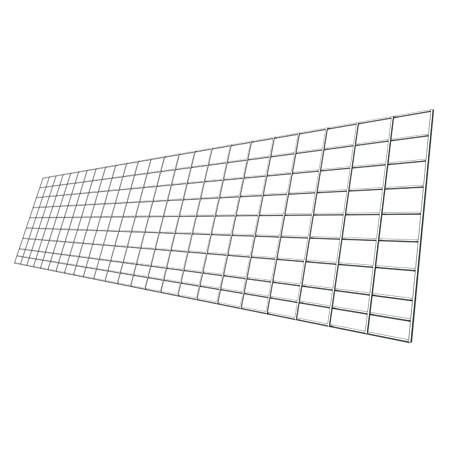
An easy to install option for your goat farm has got to be pasture panels. These panels are extremely durable and hold up to abuse from goats and other livestock you may put in with your goats. You can also set them up using t-posts, but you will have more stability if you use wood posts to put them up.
The cost of these panels is around $24 with the option of buying in bulk for a price discount. The panels are 50” tall, a perfect height to ensure goats do not climb over your fence, and 16’ long, which will make the spacing in between your posts greater and will save you money on your posts.
One problem with cattle panels is that goats may end up being able to put their heads through some of the spacings to get to the grass outside of their pasture.
Pasture Welded Wire Fence
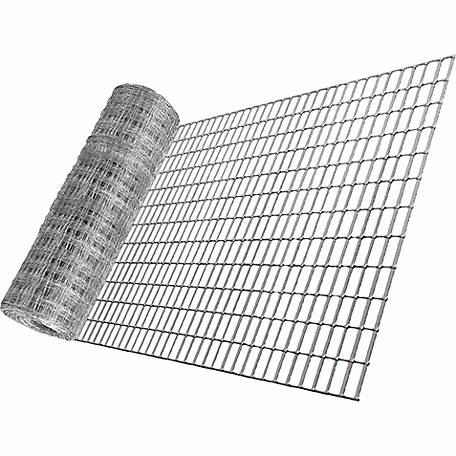
If you have a large pasture, then welded wire pasture fence is a good option to consider. This durable fence will discourage climbing as well as making it impossible for goats to put their heads through fence holes to gorge on grass outside of your pasture. Using this fence on your pasture will also reduce the amount of maintenance your fence will need down the road.
This particular welded wire pasture fence is 48” tall, making it the perfect height for goats, and is 100’ long, which makes it a cost-effective option for a large pasture. You will also only spend $80 on each roll. You may need a couple rolls to surround a massive pasture, but there are plenty of pros to make it a great candidate for your fencing material on your goat farm.
Woven Field Fence
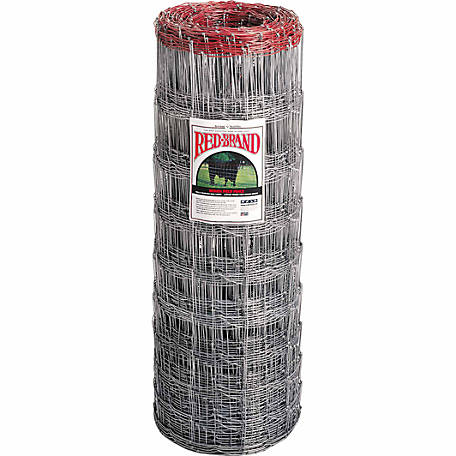
Field fence is probably one of the most economical fences to use on your pasture if you are not using electric fence. It covers more area than other rolls of fence at a smaller cost per linear foot. You will need to have posts about every 10 feet for this fence. A con about field fence though is that goats may be able to stick their heads through some of the spacings though to get to the grass outside of their pasture.
This particular woven field fence is 330’ long, one of the longest rolls of fence you can buy, and 47” tall, so that goats can’t jump over it. Coming in at only $180, you will be able save a lot of money per linear foot by using this fence. The maintenance on this fence is also very minimal. You will also be able to use this fencing to pen other animals in, making it extremely versatile.
Goat Enclosure Needs

When planning your goat fence, it’s best to start with the entire area you will need to enclose, and then situating it accordingly on your property.
Size
Standard sized goats need approximately 250 square feet of shelter and exercise space per goat. Some goat breeds are larger, or more active, and benefit from having more space.
Smaller breeds need less space, but 250 feet per goat is a good rule of thumb. Goats are social animals, and will be loud and unhappy if living alone, so you should always plan on having at least two goats. So your enclosure should always be a minimum of 500 square feet.
Keep in mind that goats without sufficient space, exercise, or forage will be highly motivated to escape and test your fences. If goats are given a large, rich, interesting living area, your fence will undergo less stress and can be less sturdily constructed.
Shelter
Goats always need shelter of some kind, and their shelter needs vary depending on your climate. Situate your goat shelter well away from the fence, because goats will often climb onto the roof of a shelter and use it to jump over a fence.
Goat Fencing Material
The best goat fencing material is woven wire (not welded), because it can withstand rubbing and chewing with less chance of hurting the goats. Wire openings need to be 4×4 inches or less, to prevent goats from putting their heads through the openings and getting caught with their horns. If you have kids or small goats, fence openings should be even smaller than that.
Many varieties of livestock fencing will work for goats. There is a fencing material specifically sold as “goat fencing” and it is made of woven wire with 4×4 openings, that comes 48 inches high, in rolls of various lengths. This height may be sufficient for some goat enclosures, but we will look more closely at that question below.
Electric Fence Materials and Chargers
Electric fence is a great option for a goat farm since it teaches animals to respect their fence. You can also buy electric fence at a fraction of the cost of conventional fence per linear foot and have bigger spacing between posts, which will save you even more money and work. And, if you have a quality electric fence charger your fence will become even more effective than having a mediocre electric fence charger.
AC Charger
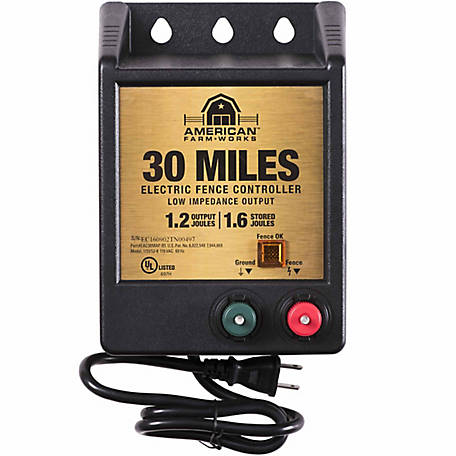
The most powerful electric fence chargers are generally AC chargers. This means they plug into an outlet. You may not be able to use an AC charger if your pasture is away from a power source, but if you can reach a power source, an AC charger comes highly recommended.
This particular AC electric fence charger can give a charge to 30 miles of fence and will cost you $100. Since it can charge 30 miles of fence it can effectively charge huge pastures and put up with more grounding from grasses than a smaller charger.
Solar Charger
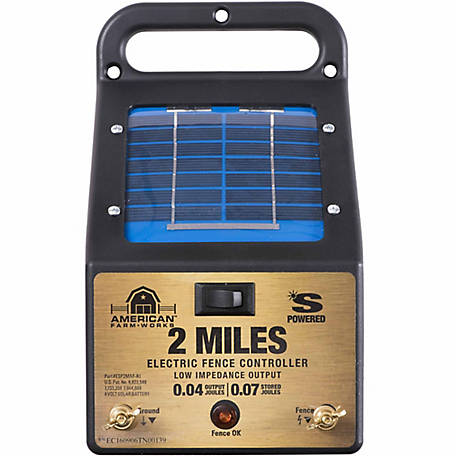
A great option if you do not have access to power for an electric fence charger is to go solar. There are many powerful solar electric fence chargers on the market that are very reliable. However, they do come at a higher cost and have to have their internal battery replaced about every 5 years.
This particular solar fence charger will run you $120 and only charges 2 linear miles of fence. It will effectively charge a decent sized pasture, but will not be as effective in tall grasses if grounding occurs.
DC Charger

The third option for an electric fence charger is the DC option. When using this kind of charger, you will need the correct battery to power it. You will not want to skimp on the battery you choose for it either, since it is what powers your charger. The nice thing about the DC option is that you will be able to place it just about anywhere you want without having to worry about access to electricity.
This particular DC charger will cost you $130 and can charge 25 linear miles of fence. It will be able to keep a massive pasture charged even with tall grasses grounding the fence.
Electric Wire
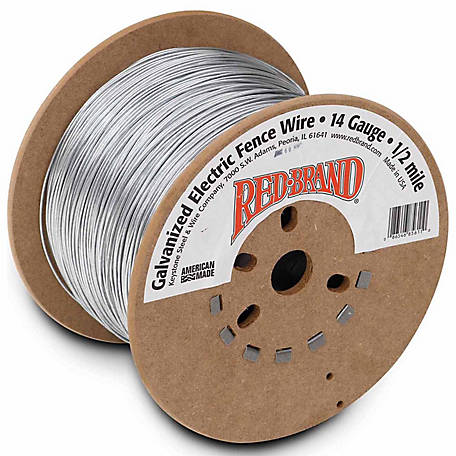
Electric wire is one of the most versatile electric fences on the market. In some places people will put 5 or 6 strands that are spaced to a total height of 40 to 46 inches tall and only electrify 2 or 3 strands. This teaches the animal to respect the fence without having to put a ton of pressure on your electric fence charger. You can also place one strand on the inside of your other nonelectric pasture fence to instill respect for the fence in your goats.
This particular electric wire roll is 2,640 feet long and comes in at only $50, making this the one of the most cost-effective option on the market. You will need insulators and a grounding rod, but those will not break the bank. The maintenance on your fence will not be a huge amount either. As long as it does not ground on tall grasses or fall into disrepair it will work very well. And, if by some chance, a wire breaks you can mend them very easily.
Electric Rope/Tape
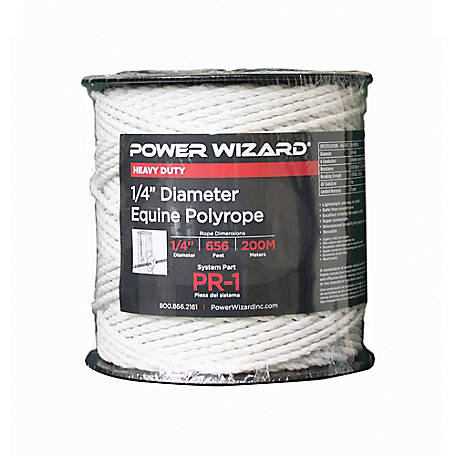
Electric rope and tape are more visible than electric wire, but they come in at a greater cost. The assembly for electric rope and tape is very similar to electric wire. You will also need the same 5 or 6 strands spaced to a total height of 40 to 46 inches.
This particular roll of electric rope comes in at $50 and is 656 feet long. If you do the math compared to electric wire, that means you are spending $0.076 a linear foot on each strand of electric rope verses spending $0.019 a linear foot on each strand of electric wire. So, while electric rope and tape are more visible, they are going to cost about triple the amount as electric wire will cost you.
Electric Netting
If you want to go electrical, but do not want to deal with installing multiple strands of fencing, then electric netting may very well the way for you to go. It does run at a higher cost, but saves you time in installation. You can also use electric netting fences as portable fences, making them extremely versatile on your goat farm.
This particular role of electric netting comes in at $280 and is 48” tall and 164’ long. Now, the really cool thing about this electric netting is that it already comes with fiberglass posts already integrated into it, eliminating much of the installation process. You will also not need a ground rod for this particular electric fencing, making it an even better option if you are wanting to have a portable fence to move around your farm. The only other thing you would really need is your electric fence charger.
Goat Fence Construction
Goat fence height
Goat fences need to be at least 48 inches high, but that may not contain breeds that are very large, or breeds that are very active jumpers. Large and active breeds may need a fence that is higher. If you have large or active predators in your area, the fence should also be higher in order to exclude them. For the best protection, a goat fence should be 6 feet high.


Goat fence posts
Goat fence posts can be made of wood or metal. They should be spaced 8-12 feet apart, with 8-foot post spacing for large and heavy goats. Closer post spacing also helps protect the bottom edge of the fence, making it more difficult to pull it up and dig or squeeze under it. Posts should be placed 2 feet deep, or secured with cement footing for stability, or both.
Braces and reinforcements
Any fence braces or supplemental supports need to be placed on the outside of the fence, so that goats don’t climb them.

To Wire or Not to Wire?
If you simply can’t build a fence tall enough to deter jumping and contain your goats, you may need to add an electrical wire 6-12 inches above the fence wire. In many cases, electrified fencing may simply be the only option to contain active, powerful goats, and livestock experts often recommend it. There are some benefits and downsides of electrical fencing for goats.
PROS
- Can be run very high, either instead of or in addition to wire fencing
- Goats are intelligent and will quickly learn to avoid the fence
- Deters not just jumping, bur rubbing, leaning, and chewing, saving stress on the fence
CONS
- Expensive
- Causes pain to the goats
- May not contain bucks in rut
Some goat owners find that electrified fencing is the most effective way to contain and protect their goats. Some feel that it’s too expensive, or can’t bear the idea of hurting their goats. If you live near a highway or in a high-predator area, it may be a smart decision. For those in quieter areas or with calmer goats, it may be wise to wait and see if it’s necessary.
Fencing a Buck

A male goat in season is extremely difficult to contain with any standard goat fence. At that time, he is highly motivated to use intelligence or brute force to overcome a fence. When a doe is in season, she will also attempt to find a way to get to the buck, and goats are known to find a way to mate through a fence.
A buck needs to have an extremely sturdy enclosure, and should also be kept well away from any enclosure containing does, with several feet of space between both fences. While 2-3 feet of distance may suffice to contain both goats and prevent accidental breeding, it is not enough distance to actually deter a buck from pushing and straining at a fence.
A distance of 12 or more feet is more discouraging. Make sure that posts are 8 feet apart or closer, cemented into the ground, and that the fence is 6 feet high. Also make sure that gates, hinges, latches, and other attachments are extremely strong to withstand battering.
Fencing a Kid

Goat kids are often small enough to fit through fencing gaps that would contain adult goats. In an area without many predators, this is sometimes not considered a problem, as they will generally return to their mothers on their own.
However, if goat kids get in the habit of squeezing through a fence, they will maintain that habit, and either stress or distort the fence as they grow, or get stuck when they get too big for the opening. This behavior is sometimes deterred with an electric wire along the lower edge of the fence.
You may also temporarily add a second layer of woven wire fencing that is only 2-3 feet tall, with smaller openings that will contain baby goats. If it is used in addition to standard goat fencing, it doesn’t need to be as strong.
Goat Fence Maintenance

Whatever kind of fence you have for your goats, regular maintenance is a must. If you have a large herd of active goats, maintenance needs to be done thoroughly and regularly. Here is an example schedule for a small homestead with a couple of goats.
Daily
Walk the fence line and inspect it for wear, holes, and distortions. Goats place the most stress on the lower third of the fence, so check that most closely, looking for any areas where there may be gaps between the fence and the round. Bend strained wire back into place. If there is a repeated area of wear or bending, you may need to reinforce your fence in that spot.
Quarterly
Check the entire fence thoroughly, making sure that posts are still seated securely and that the fence is not damaged or broken. Oil hinges and latches, checking that screws and attachments are still secure. Check wire spacing to make sure it is correct.
Annually (before breeding season)
Check your fences again. Consider placing flagstones at the base to protect the bottom of the fence. Make sure posts, gates, and corners are sturdy and secure. Check for weather damage or wood rot.
Fences should also be inspected for needed repairs after severe storms and weather incidents.

The best way to contain goats is to provide them a healthy, happy environment. Goats are intelligent and loyal animals who may escape, but will also readily come home if they are well cared for. If goats are repeatedly, determinedly attempting to break out of their enclosure, consider making it larger, improving the quality of their forage, or providing them with more toys and entertainment options.
Wrapping Up
When planning your fence on your goat farm there are many effective fencing options to consider. Your decision will need to be based on what you want to spend, what you are willing to maintain, and your end goal for your fence.
Once you get your fence installed, you will be able to sit back and enjoy watching your goats playing safely inside the fence you made just for them!





One response to “Goat Fencing: Planning and Supplies You’ll Need”
I appreciate the to-the-point way you present the different ways to fence for goats. I do not own goats at this time but I’m making plans to possibly get into the business. You blog helped me focus on certain important areas.